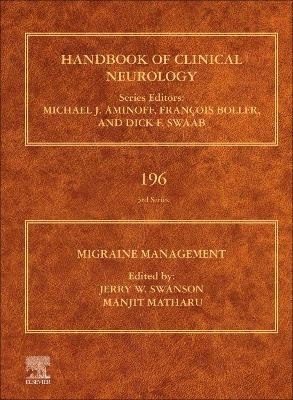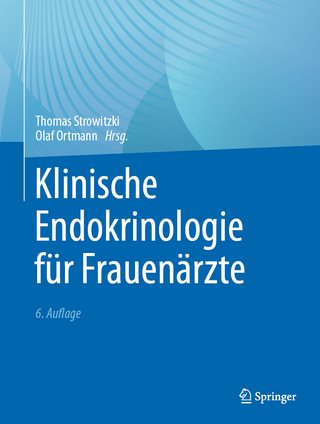
Migraine Management
Elsevier Science Publishing Co Inc (Verlag)
978-0-12-823357-3 (ISBN)
Jerry W. Swanson, MD, is a consultant in the Department of Neurology and Professor of Neurology in the Mayo Clinic College of Medicine and Science. Dr. Swanson received his medical degree from the Feinberg School of Medicine at Northwestern University in Chicago. He completed a neurology residency at Mayo Clinic. He earned the Master of Health Professions degree at the University of Illinois at Chicago. He has been on the staff of Mayo Clinic in Rochester, Minn., since 1982. He is former chair of the Headache Division in the Department of Neurology and founding director of the headache medicine fellowship at Mayo Clinic in Minnesota. Dr. Swanson is board-certified in Neurology and in the subspecialty of Headache Medicine. He has written extensively about headache and other neurologic disorders. Swanson has made more than 100 presentations at national and international meetings, published more than 60 peer-reviewed articles, and numerous book chapters; he is an associate editor for the journal Headache and is a neurology editor for MayoClinic.com, a leading site for health information for the public. He has co-edited two books including The Mayo Clinic on Headache, a highly praised book for the lay public. He is a neurology editor for MayoClinic.com and is the headache topic editor and neurology editor-in-chief for UpToDate. He was a founding member for the UCNS Headache Medicine examination committee and is currently serving another term on the committee. He was the founding director of the Headache Medicine fellowship at Mayo Clinic in Rochester, Minn. Dr. Swanson has served in several leadership roles in the American Academy of Neurology and the American Headache Society and was a member of the International Headache Congress scientific program committee. He has been the recipient of the Mayo Medical School Dean’s Recognition Award. Dr. Manjit Matharu is a Consultant Neurologist at the National Hospital for Neurology and Neurosurgery, Queen Square, London. He received a BSc (First Class Honours) University of Manchester and MB, ChB (Honours Degree) University of Manchester. He earned a PhD at the University of London. He completed his residency in Neurology at The National Hospital for Neurology and Neurosurgery, The Royal London Hospital and Homerton Hospital in London in 2007. Dr Matharu’s major research interests include functional and structural imaging in Primary headaches, trigeminal autonomic cephalalgias and neurostimulation for intractable headaches. He has authored over 100 scientific papers. Dr. Matharu is the clinical and academic lead of the Headache Group at The National Hospital for Neurology and Neurosurgery, which is widely recognized as one of the foremost Headache Centers worldwide. He has lectured on headache topics both domestically and internationally.
Section I. Migraine Management 1. Non-specific analgesics, combination analgesics, and antiemetics 2. The 5-HT1B and 5-HT1D Agonists in Acute Migraine Therapy: Ergotamine, dihydroergotamine, and the triptans 3. 5-HT1F agonists 4. CGRP receptor antagonists (Gepants) 5. Preventive treatment of migraine: Non-specific oral agents 6. OnabotulinumtoxinA: Discussion of the evidence for effectiveness of OnabotulinumA and its place in chronic migraine treatment 7. CGRP monoclonal antibodies and CGRP receptor antagonists (Gepants) in migraine prevention 8. Nutraceuticals in migraine 9. Interventional treatments 10. Biobehavioral treatments of migraine 11. Physical treatment of migraine 12. Neuromodulation in migraine Section II. Guidelines 13. Evidence-based symptomatic treatment of migraine 14. Evidence-based preventive treatment of migraine Section III. Special Cases/Situations 15. Treatment in the emergency department 16. Special considerations in migraine during pregnancy and lactation 17. Special considerations in management of migraine in the elderly 18. Management of medication overuse headache Section IV. Outcome Measures 19. Outcome Measures for Migraine: Measuring the impact of migraine and results of migraine treatment Section V. Diagnosis and Treatment of Other Migraine Subtypes 20. Menstrually associated migraine 21. Hemiplegic migraine 22. Migraine with brainstem aura 23. Retinal migraine 24. Vestibular migraine and persistent postural perceptual dizziness 25. Status migrainosus 26. Persistent aura, visual snow, and other visual symptoms 27. Migrainous infarction 28. Migraine in children and adolescents: Assessment and diagnosis 29. Management of migraine in children and adolescents Section VI. Comorbidities of Migraine 30. Psychiatric comorbidities of migraine 31. Relationship of migraine and other forms of chronic pain 32. Comorbidities of migraine: Sleep disorders 33. The evolving concept of multimorbidity and migraine Section VII. Future Directions 34. Healthcare disparities faced by patients with migraine and potential mitigation strategies 35. Emerging and future directions of migraine research and treatment
| Erscheinungsdatum | 21.03.2024 |
|---|---|
| Reihe/Serie | Handbook of Clinical Neurology |
| Sprache | englisch |
| Maße | 192 x 262 mm |
| Themenwelt | Medizinische Fachgebiete ► Innere Medizin ► Endokrinologie |
| Medizin / Pharmazie ► Medizinische Fachgebiete ► Neurologie | |
| Naturwissenschaften ► Biologie ► Humanbiologie | |
| Naturwissenschaften ► Biologie ► Zoologie | |
| ISBN-10 | 0-12-823357-5 / 0128233575 |
| ISBN-13 | 978-0-12-823357-3 / 9780128233573 |
| Zustand | Neuware |
| Informationen gemäß Produktsicherheitsverordnung (GPSR) | |
| Haben Sie eine Frage zum Produkt? |
aus dem Bereich


